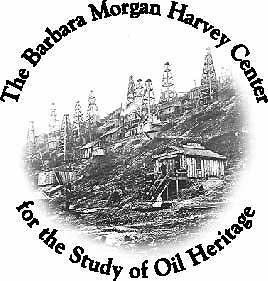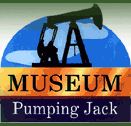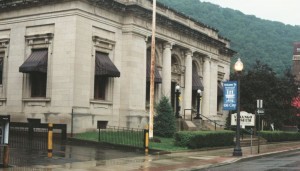Pennsylvania museums preserve the beginning of U.S. petroleum exploration history, which began in 1859 near Titusville.
The Keystone State museums linked below exhibit technological and environmental advancements, discoveries, products and local pioneers. Their exhibits feature an industry that brought kerosene to lamps, gasoline to autos, and jet fuel to jets — and rockets.
The American Oil & Gas Historical Society, which depends on individual contributions, provides updated links to these Pennsylvania petroleum museums and petroleum museums in other states.
Barbara Morgan Harvey Center for the Study of Oil Heritage
A center dedicated to the study of the oil heritage region is housed at Clarion University–Venango Campus in Oil City.
The Barbara Morgan Harvey Center for the Study of Oil Heritage features the late Barbara Harvey’s collection of books and papers donated to the university by her children. This Pennsylvania petroleum museum collection contains more than 300 titles and includes books that document the history of the region, newspaper clippings from the early 1900s, minutes from the meetings of early oil companies from the late 1800s, maps and photographs.

Visit the Barbara Morgan Harvey Center for the Study of Oil Heritage at Clarion University-Venango Campus in Oil City.
In addition to the collection, Joseph S. Harvey, the late Mrs. Harvey’s husband, created an endowment to support ongoing educational activities at the Center. Community history days feature folk music, barbeques, and storytelling – and videotaping residents of the area reminiscing and telling stories about the region.
This Pennsylvania petroleum museum website notes: “Internal combustion engines revolutionized the world around the turn of the 20th century in much the same way that steam engines did a century before. One has only to imagine a coal-fired, steam-powered, airplane to realize how important internal combustion was to the industrialized world.”

Founded in 1985, the Coolspring Power Museum collection presents evolution of internal combustion engine technology. Photo by Bruce Wells.
Stationary gas hit and miss engines, throttle governed engines, flame ignition engines, hot tube ignition engines, and hot air engines ranging in size from a fractional horsepower up to 600 horsepower. All are among the permanent exhibits at the Coolspring Power Museum in Coolspring.
Founded in 1985, this Pennsylvania petroleum museum collection presents an illuminating history of the evolution of internal combustion engine technology that put an end to the steam powered era. More than 250 stationary engines are housed in 20 display buildings.
The Coolspring Power Museum — among the most unique engine collections in the world — is located in western Pennsylvania off Route 36 midway between Punxsutawney and Brookville.
The Drake Well Museum in Titusville “collects, preserves, and interprets the founding of the oil industry in Pennsylvania for residents and visitors by educating its audiences about the persons, places, and events important to the development of the petroleum industry and its growth into a global enterprise.”

Visitors to the Drake Well Museum along Oil Creek in Titusville, Pennsylvania, can tour a replica of Edwin Drake’s cable-tool derrick and steam-engine house among other outdoor exhibits. Photo Bruce Wells.
Friends of the Drake Well, Inc., the museum’s membership association, has reprinted the Early Days of Oil, by Dr. Paul Giddens. Also available is a DVD of this Pennsylvania petroleum museum collection of three orientation films: · “Born in Freedom: The Story of Colonel Drake” — produced by the American Petroleum Institute in 1954 and starring Vincent Price. “Oil! The Power of Pennsylvania Petroleum” and “Pithole USA.”
The Penn-Brad Oil Museum preserves the philosophy, the spirit, and the accomplishments of a little-known oil country community — taking visitors back to the early oil boom times of “The First Billion Dollar Oil Field” in Bradford, today home of the oldest continuously operating refinery, the American Refining Group, Inc., which celebrated its 125th anniversary in 2006.

The Penn-Brad Museum and Historical Oil Well Park is located south of Bradford on Route 219, near Custer City. Photo by Bruce Wells.
Guided tours are often conducted by retired exploration and production professionals who volunteer their time to relate a wealth of oil patch knowledge – and first-hand experiences.
The Institute was founded in 2003 as a not-for-profit organization. It is the successor to the Drake Well Foundation, which in its past was a successor in 1951 to an earlier operating committee formed by the American Petroleum Institute at the Drake Well Museum. The Institute is dedicated to furthering public awareness of the history of the oil industry through research, documentation, archival activities, presentations and other outreach activities.
The Institute publishes an annual journal, Oil-Industry History and reprints old and rare books on the industry. The Institute holds symposiums on oil history, conducts field trips and prepares guide books.
Pumping Jack Museum (Facebook page)
The Pumping Jack Museum collects, protects, and displays the unique heritage of the town of Emlenton.

Dedicated volunteers maintain the Pumping Jack Museum in Emlenton.
“Our rich history is a convergence of early oil history and the heritage of the surrounding area. We want to honor all those who have gone before us that worked in the early western Pennsylvania oilfields, refineries, and on local farms,” says museum President Richard L. Carr.
The museum is located in the Crawford Center – the former Crawford Memorial School Building. Among the pumping jack displays are memorabilia from America’s earliest oilfields.
A small museum in Warren County features a collection of early oil and gas production equipment — and more than 80 gasoline pumps, hundreds of signs and globes. Tractors, farm equipment and engines, antique cars and many turn-of-the-century exhibits can be seen six miles north of Tidioute.
Venango Museum of Art, Science and Industry
The Venango Museum, established in Venango County in 1964, works in partnership with the Oil Heritage Region, Inc. The museum interprets the significance of the early petroleum industry of Oil Creek Valley.

The Venango Museum of Art, Science and Industry’s Beaux Arts building is listed in the National Register of Historic Places. Photo by Bruce Wells.
The museum collects rare oil region artifacts and materials related to the history and culture of the Venango County. Its collection includes objects, photographs and early corporate documents from Pennzoil, Quaker State and Imperial Works, and Oil Well Supply Company.
The museum offers lectures, workshops, musical programs and visits to historic sites. It owns a fully restored 1928 Wurlitzer Theater organ. The museum also works in partnership with the Allegheny National Forest as part of the Allegheny National Wild and Scenic River Management Plan.
Want to add your museum or update one? Know of another petroleum-related exhibit? Please contact the society.
_______________________________________________
The American Oil & Gas Historical Society preserves U.S. petroleum history. Become an AOGHS annual supporting member and help maintain this energy education website and expand historical research. For more information, contact bawells@aoghs.org. © 2022 Bruce A. Wells.
Citation Information – Article Title: “Pennsylvania Oil Museums.” Author: Aoghs.org Editors. Website Name: American Oil & Gas Historical Society. URL: https://aoghs.org/pennsylvania-petroleum-museums. Last Updated: March 30, 2022. Original Published Date: December 1, 2004.


